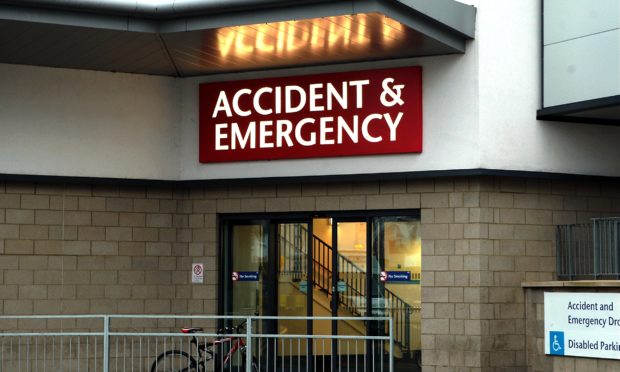Health chiefs are taking action to combat a growing number of falls among the Angus elderly at a time when rates are dropping across the rest of Scotland.
As the number of hospital admissions for over 65s who have taken a tumble decreases nationwide, the Angus figure has risen to 25.5 for every 1,000 people — up from 19.3 three years ago.
The situation has been highlighted as a blot on an otherwise positive annual report card presented to the area’s Integration Joint Board.
Experts say the issue a complex one and have pointed towards the growing number of frail elderly staying in their own homes for longer as one possible factor.
The over-85s – who account for 45% of all fall incidents – will be a key target group in an action plan aimed at reversing the rising rate.
Closer links with the Scottish Ambulance Service will also be forged after data for a single month considered 77 incidents, leading to 47 OAPs being taken to A&E. None of those who escaped a hospital trip were referred to an existing falls prevention service
Angus Health and Social Care Partnership’s head of community health and care services (North Angus) Gail Smith said people were staying in their own homes for longer than in the past.
“They don’t want to go in to hospital or move into supported care unless they really need to and as a result we have seen a reduction in the use of sheltered housing by older people,” she said.
“The typical age that someone moves into a care home, should this be required, is now around 85 years.
“As we manage people in their own homes for longer, we have a greater proportion of frailer people living in our communities and Angus HSCP has had great success in looking after people at home rather than hospital.”
She said falls among this group were not uncommon and had many possible causes.
“Our focus is how we prevent falls in the older population and encouraging good balance and mobility is the key to this.
“Working with the third sector and Angus Alive, we promote forms of exercise from an earlier age that improve balance and mobility.”
Staff are also involved in delivering a physical activity care programme in conjunction with the Care Inspectorate.
Ms Smith added: “We are also working on reducing the risk associated with being prescribed multiple medications.
“Part of this has been implementing a new system within Tayside GP prescribing systems which allows identification of patients who may be prescribed medications, or a combination of medications, which places them at higher risk of side effects, for example falls.
“This then allows GPs and pharmacists to review these medicines with their patients to ensure that it is still the right treatment for them.
“In addition, work is ongoing with the Scottish Ambulance Service to consider pathways for people following a fall to ensure that those who could be better managed within the community have access to the support they need rather than travelling into hospital.”










